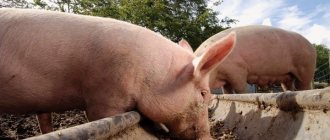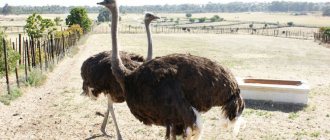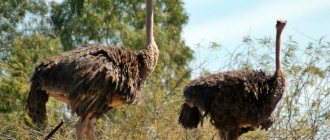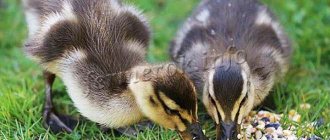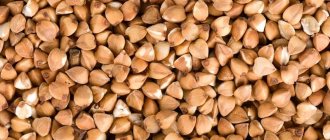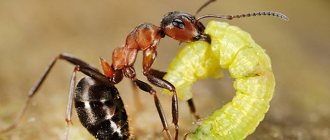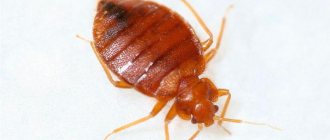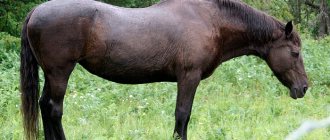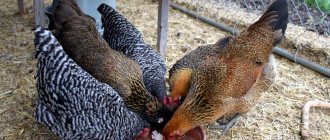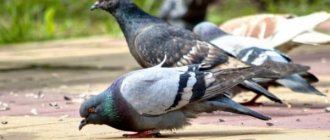For a long time now, birds such as ostriches have ceased to be something unusual for people. The advantages of breeding these birds in your own home are quite obvious. Ostriches not only produce exotic, huge eggs, but also very healthy red meat, as well as beautiful feathers. In order for an ostrich to be healthy, great importance must be given to feeding, because proper nutrition is the key to growth, tasty meat and weight gain.
In this matter, it is important to consider not only what the ostrich eats in its natural environment, but also what additional beneficial supplements the owner can give it, the weight of the bird and the conditions of detention. We will tell you in more detail about the peculiarities of feeding ostriches independently in this article.
What do ostriches eat?
Ostriches are accustomed to living in the wild; naturally, they eat the food that they get themselves, that is, they are omnivores. The diet of ostriches is quite varied, because they can eat plant foods:
- alfalfa;
- various grass;
- leaves from trees.
So do living creatures:
- small insects;
- bugs;
- snails
The diet is supplemented with mixed feed, crayons, shells, proteins, vegetables and grain crops.
In nature
Ostriches, which are large feathered birds, live in the African savanna with long plains. A large amount of greenery and young leaves grow in these areas - this is the main food for ostriches. The African savannah is home to a lot of herbivorous animals. In nature, the diet of ostriches is pasture.
Birds can be without water for quite a long time, so they often nest in dry desert surroundings, where they eat seeds, roots, and branches that grow on bushes.
For variety, in addition to greens, they eat small insects, rodents and reptiles. In order for an ostrich to expend a lot of energy and be able to run far, it needs about 4 kg of food per day.
In nature, ostriches come into contact with antelopes and zebras; these animals have excellent eyesight, so the former can notice a wild animal and notify their friends about it. Antelopes and zebras help ostriches with food; they use their sharp legs to remove insects from the grass.
On the farm
Birds living on a farm or in a private household do not have a much different diet than free-ranging birds. The food that ostriches eat in the wild is what they eat at home or on the farm. The only difference is that on the farm they are given a little space, so they move less, use little energy and eat little. Their main food is fresh grass, greens and leaves.
The table below shows the costs of concentrated feed per individual of different ages:
| Periods | Bird age in months | How much feed will you need for a year? |
| Newborn | from 0 to 2 | 16 kg |
| Start | from 2 to 4 | 84 kg |
| Fattening | from 4 to 6 | 100 kg |
| Finish | from 6 to 10 | 300 kg |
| Slaughter | from 10 to 12 | 150 kg |
When feeding birds properly, they should weigh as follows:
- in 1 month up to 3 kg;
- at 2 months up to 10 kg;
- from 2 to 6 months up to 60 kg;
- from 6 to 11 months up to 100 kg;
- from 11 to 14 months up to 120 kg.
The influence of the digestive system of ostriches on the diet
The digestive tract of birds corresponds to the living conditions in the droughts of savannahs and prairies. These birds have no goiter compared to other poultry. Food penetrates into the pregastric compartment, where it is softened by the liquid secreted from the walls of the forestomach.
After which the soft mixture passes into the stomach, where there are thick, hard walls. Ostriches do not have teeth, so they often swallow small stones. Food, which consists of coarse fibers, is processed along with pebbles.
At the end of the process, useful substances are absorbed in the small intestine, which is 5 meters long. The remaining fiber is broken down only in the processes of the cecum.
Thanks to this, birds can go without water for quite a long time, since it is replenished from food.
Natural habitats
Several decades earlier, or maybe centuries, common ostriches were found in fairly large areas that were associated with the northwestern territories of Africa. Therefore, the bird inhabited many African countries, such as Uganda, Ethiopia, Egypt, Algeria, Senegal, Mauritania and others.
Currently, the habitat of these unique birds has been significantly reduced, so ostriches are found only in some countries of the African continent.
The southern territories of Ethiopia, northeastern Kenya, and Somalia are considered to be the natural habitat of Somali ostriches. This subspecies prefers to live alone or in pairs.
Masai ostriches are found throughout Kenya, Tanzania and Ethiopia. The southern subspecies prefers to live in southwest Africa. In addition, they are found in Namibia and Zambia, Zimbabwe, Botswana and Angola. Their habitat is also associated with the Kunene and Zambezi rivers.
Feeding methods
Feeding rations need to be given a lot of attention when breeding ostriches. With proper, nutritious and rational feeding, ostrich chicks will enjoy good weight gain, good development and high productive qualities. In winter, you need to give preference to alfalfa, which is sold in the form of hay, and in the summer, give fresh alfalfa mixed with animal feed. One and a half kilograms is enough for one individual.
There are 3 types of feeding, the choice is up to the bird owner:
- Intensive method.
- Semi-intensive.
- Extensive.
Intensive method
This method involves feeding ostriches with mixed feed or self-prepared grain mixtures (crushed corn, wheat, cake, premixes). Silage, hay and mass from perennial grasses are also added to the diet.
Semi-intensive
If the walking area is small, then a semi-intensive feeding method is chosen. In this case, the ostriches go out on their own, move a lot, feeding on pasture. But at the same time, the owner feeds him with specialized food in the form of mixed feed granules with chopped vegetables and herbs. This method is considered the best, since the birds feed both naturally and artificially, getting everything they need.
Extensive feeding
As for the extensive method, it entails an independent search for food by walking in the pasture. This option is very economical, since there is no need to constantly buy feed in stores. The diet is supplemented with mixed feed. In Africa, people have been breeding ostriches for a long time and they have noticed that they get the best growth when kept on pasture, especially in a meadow dotted with alfalfa. The walking area should be as follows: 1 hectare per 10 birds.
In addition, it turned out that from two weeks to 4 months it is better to keep the chicks on pasture, after which they are transferred to fenced pens and given alfalfa in granules or simply crushed.
Experienced farmers walk ostriches on forbs of seradella, clover, and vetch. They also graze well on the field after harvesting wheat. During drought, when there is little natural food, feeding is done as with the intensive method.
How to choose feed?
Every farmer who breeds ostriches wants to purchase the best food for his animals. There are many types of feed with various additives. You need to choose feed based on the weight and age of the bird. Typically, they are divided into several types of food based on age:
- from 0 to a month;
- from 1 to 2 months;
- from 2 to 4 months;
- from 4 to 6 months;
- from 180 to 330 days;
- from 330 to 420 days;
- feed for feeding during rest;
- feed during the laying period.
It is important to purchase food from specialized stores or trusted places. When purchasing a product, you need to pay attention to the composition and expiration date. You should not give small ostriches food for adults and vice versa.
The table shows the names of the feeds and their approximate cost:
| Name of food | Cost in rubles, wholesale price per 1 kg |
| KS-30 | 19 |
| KS-60 | 18 |
| KS-120 | 16 |
| KS-180 | 16 |
| KS-330 | 15 |
| KS-420 | 12 |
| KS0 | 17 |
| KSN | 16 |
You can see current prices on the website strausferma.ru
Self-preparing food
Compound feed can be fed to ostrich chicks from the first days of life, since the composition allows you to replace complementary foods. The feed was created in such a way that the animal received the necessary substances in the right quantities.
It contains:
- wheat;
- cake;
- corn;
- fish flour;
- calcium phosphate;
- chalk;
- soy;
- sodium chloride;
- premixes;
- lysine;
- methionine;
- threonine
You can always make your own food by following the table:
| Component | Growth period from 2 months to a year, % | Productivity period, % | Productivity period, % | Productivity period, % | Unproductive period, % |
| Barley | 15 | 20 | 5 | 27 | 25 |
| Wheat | 12 | 11 | 10 | 11 | 18 |
| Corn | 30 | 15 | 20 | 15 | 20 |
| Oats | 3 | 12 | 20 | 12 | 5 |
| Fish flour | 5 | 10 | 7 | — | 5 |
| Bran | 5 | 5 | — | 7 | 10 |
| Sunflower meal | 7 | 10 | 5 | — | 2 |
| Soybean meal | 10 | 5 | 15 | — | 5 |
| Yeast | 5 | 3 | 5 | — | 2 |
| Bone flour | 2 | 2 | — | — | 2 |
| Vegetable oil | 1 | 1 | 3 | 3 | 1 |
| Chalk | 1,2 | 3 | — | — | 1,4 |
| Monocalcium | 3 | 2,5 | — | — | 3 |
| Salt | 0,1 | 0,01 | — | — | 0,01 |
| Premix PKK P 8 569 | 0,5 | — | — | — | — |
| Premix PKK P 9 570 | — | 0,5 | — | — | — |
| Premix PKK P 9 571 | — | — | — | — | 0,05 |
| UVMKK "Felucen" 1175 | — | — | 10 | — | — |
| UVMKK "Felucen" 654 | — | — | — | 25 | — |
Is an ostrich farm profitable?
In order to raise ostriches, you should adhere to a business plan. First, you need to decide on production volumes and find where to sell the products. Next, you should calculate the costs of renting or purchasing premises and territories, food, water, electricity, advertising, and paying employees to obtain a permit. You also need to find people who sell and buy ostriches, and find staff who will care for the pets. This business will require significant financial investment.
Market price
In Russia, ostriches are sold at the following prices:
- chicks 1-1.5 months old are sold for about 3-4 thousand rubles;
- an ostrich that has reached 1-1.5 years old costs from 30,000 rubles;
- ostrich aged 2-2.5 years – 35,000-38,000 rubles;
- several mature birds are sold at prices ranging from 80,000 to 120,000 rubles.
Feeding characteristics of ostrich chicks
If ostrich chicks are fed incorrectly, they may grow up with uneven legs, which will not allow them to live a normal life. Newborn ostrich chicks can live for several days without food, which makes feeding and transport over long distances easier. This is explained by the fact that their body contains a lot of protein, which is absorbed only in 10 days.
On their first walk, the chicks are allowed access to clean water and food, which consists of crushed alfalfa or clover leaves and feed. Once every 1-2 days they are offered low-fat cottage cheese with chopped hard-boiled eggs.
In the following video, the farmer shares his experience of feeding ostrich chicks:
Starting from the second week of life, ostrich chicks gain 300 grams per day and increase by 1 cm daily. At three months of age, the chicks weigh 15 kg. Babies need to be given gravel, otherwise the stomach simply will not be able to digest food, indigestion will occur, and they will be constantly hungry.
At three months of age, fiber and protein are added to the main feed. Juicy grass should also be present in the chicks’ diet, as well as flour and silage. In order to improve the digestive tract, crushed pebbles are needed, they are necessary so that the chick does not die while chewing solid food.
For some reasons, young animals are fed with the droppings of adult birds, this allows them to populate the intestines with good microflora. But before doing this process, you need to make sure that the adult ostrich is completely healthy and not infected with worms.
Until the chicks are six months old, they are fed five times a day; from six months to one year of age, the number of feedings decreases to 4 times. An adult feeds twice or thrice a day.
Drink
Although ostriches are accustomed to droughts, they still need to be offered clean water. In households and on farms, a drinking bowl is placed along with food so that they can drink to their heart's content. An important condition is the purity of the water, because the health of the bird depends on it.
For 1 kg of dry food there should be 2.5 liters of water, and access to water should be constant. The height of the drinking bowl should be 70 cm from the ground or floor.
Feeding during the laying period
During the period of egg laying, females and males change their need for substances. As for females, their need for calcium increases, since eggshells are formed during this period.
In males, too much calcium interferes with the absorption of zinc, which plays a major role in sperm production. A high level of substances in females is needed for the egg to form correctly, and if the male overeats, this will lead to obesity, and fertility will be low.
Feeding during the laying period of females and males should be different. Males and females are kept separately and only allowed in for a few hours every other day. But this process is done only after she has eaten.
You can feed ostriches during the laying period the following products:
- wheat;
- chopped corn;
- succulent leaves;
- compound feed;
- foods containing calcium;
- chalk;
- grass.
Varieties
The main varieties of the breed are:
- emu (country of origin – Australia);
- African (South Africa);
- rhea (South America).
Ostrich Emu
The emu differs from all other breeds in its unusual plumage color - brown or gray. They are unusually tall, but have a poorly developed skeleton and no flight wings. Females and males of emus look almost identical; few poultry farmers can tell just by appearance which is a boy and which is a girl.
Like any other breed, they run away at speeds of 50-60 km/h if they sense danger. They eat everything, their character is calm and flexible, they are sociable and quickly begin to feel affection for people.
African ostrich
This breed has its own internal subspecies:
- black African ostrich;
- Namibian;
- Zimbabwean;
- Maasai.
The African variety of these birds impresses with its beauty and incredibly soft black and white plumage. To keep these birds you need a stable temperature of +22…+36oC. They definitely need a large walking area and a warm room in the winter. Living with people for a long time, these fluffies easily contact their owner and certainly become attached to him.
Nandu
In appearance, rheas are similar to the black African variety. The average bird is 135 cm tall and weighs up to 30 kg. They differ from all their fellows in the absence of feathers in the head and neck area. The body area is colored with grayish feathers. Individuals of this species are considered herbivores.
How does your diet change in winter, spring, summer and autumn?
Like any animal, its diet changes depending on the time of year, ostriches are no exception.
Summer. In the summer, ostriches spend most of their time walking, where they look for food for themselves. In addition, they need to be offered daily one and a half kg of feed, which they must eat per day. To replenish the body with all the necessary substances, and especially protein, lupine, beans, fruits, and cake are mixed into the main food. These components are easily absorbed by the body, especially together with the amino acid found in chalk, shells, eggshells and bran.
Autumn and spring. In the spring-autumn period, ostriches should eat greens or grass meal; gravel, cake, and grain must be present. It is recommended to dilute food with bone meal, table salt and chalk. Also, vegetables are required in the diet of both adults and ostriches.
Winter. In winter, ostriches are fed with pre-prepared hay, which is mixed with concentrated feed and grains. Birds are allowed to give between feedings:
- cabbage leaves;
- beet tops;
- fodder beet;
- carrot;
- zucchini;
- apples;
- waste.
The main food in winter remains hay, it is better if it comes from alfalfa.
The following report talks about feeding and keeping ostriches in Siberian conditions:
What should you not feed?
Although ostriches are omnivores, there is still a certain set of foods that cannot be fed to birds and those that must be given in limited form.
The following foods cannot be fed:
- potato;
- parsley and dill;
- rye.
Can be given in limited quantities:
- cabbage;
- flour;
- bran.
Popular questions and answers
Beginning farmers have many questions about keeping and breeding ostriches. Before you get livestock, you should collect as much information as possible about keeping and feeding birds.
1Question: Should ostrich chicks and adult birds be fed together or separately?
Food intake for ostrich chicks and adult birds should be separate, since babies cannot eat many things that older birds can. The same applies to the number of feedings per day: newborns eat 5 times a day, and adults only 2-3 times.
2Question: How long can ostriches live without water?
Ostriches can go without water for several days, but if it is available, they drink it in large quantities. However, birds should always have clean water. Drinkers should be washed daily.
3Question: Do ostriches need to be given shell rock?
Limestone and shell rock should always be present in birds, and freely available, because they help the skeleton form correctly. They are especially important in the first days of their life.
4Question: when should I start feeding ostrich chicks?
Newborn chicks do not need feeding, since they have a yolk sac in their umbilical cord for several days, which serves as food for them. Adult birds are fed 2-3 times a day, but babies should have food constantly. When complementary feeding begins, the chicks should receive a variety of mash, concentrated feed, and crushed leaves without stems.
Feeding ostriches is a rather labor-intensive process, since the ratio of grain, grass, feed, etc. must be taken into account. The health and life expectancy of the bird depend on proper feeding. The diet should include all the nutrients and beneficial substances responsible for the proper formation of the body.
0
0
Copy link
Useful tips for beginners
There are some details in ostrich breeding that, if you keep in mind, a beginner in this type of business will be more successful:
- It is best to locate the farm in an area with forest belts for protection from the wind.
- Feeders and other objects should not have holes in them that are comparable in size to the volume of an ostrich’s head. If a bird sticks its head into a hole, it immediately forgets how it did it. Serious injury may result.
- Ostriches should not be locked in a poultry house for the entire winter. They are quite capable of withstanding walks in slight frost.
- A blow to the head can be critical for a bird, so you need to make sure that this does not happen.
- Feeders and drinkers should never be rusty. Rust releases toxins into food and drink.
- Ostriches are not at all as timid and fearful as many people think. Males are quite aggressive, especially during incubation (and males and females incubate them in turns during the day). Therefore, you need to approach them carefully, without making sudden movements.
- Young animals cannot be lifted by their wings. Growing birds need to be held by the chest and back.
- The farm workers caring for the birds must be constant - frequently changing faces disorient the birds, creating a stressful situation.
- The ostrich body perceives granular grain crops best, rather than flour or bran.
- When feeding young animals, alfalfa stems are not used, only leaves. The stems are too heavy to digest.
Breeding ostriches is a promising branch of agriculture, because they provide not only meat, but also eggs and feathers. These birds are generally omnivorous and unpretentious. Keeping and feeding them is not difficult if you remember some important points highlighted in this article.
